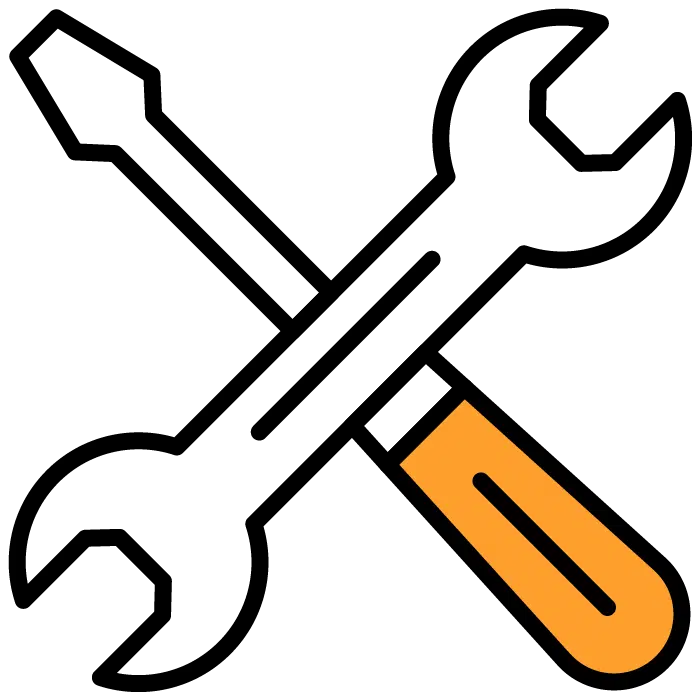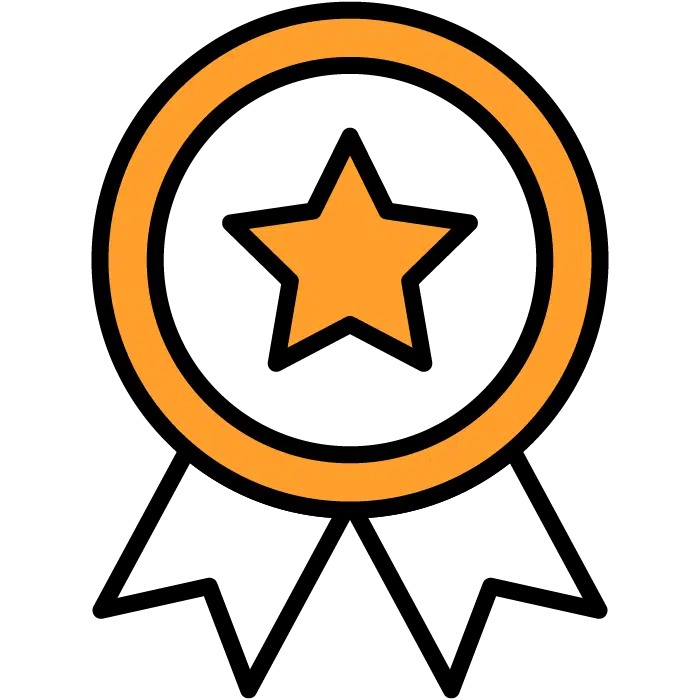Remember the movie Catch Me If You Can, where Leonardo DiCaprio portrays Frank Abagnale Jr., a masterful con artist who successfully impersonates a pilot, a doctor, and a lawyer—all without any formal qualifications?
While entertaining on screen, the idea of someone infiltrating your company under false pretenses is a real-world nightmare for any CEO. Today, with the rise of AI-generated resumes, this scenario isn’t as far-fetched as it once seemed.
In an era where 85% of candidates admit to lying or embellishing their resumes, the influx of AI-generated resumes has made it increasingly challenging to discern genuine talent from fabricated proficiency. This not only wastes valuable time but also poses significant risks to your company’s productivity and culture.
So, how can you effectively sift through this deluge and ensure you’re bringing the right people on board? Let’s delve into credible, research-backed strategies and tools that can enhance your hiring process and safeguard your company’s future.
The Real Cost of Resume Fraud
The Prevalence of Dishonest AI-Generated Resumes

A study by the Society for Human Resource Management (SHRM) found that 85% of employers have caught applicants lying on their resumes. With AI tools making it easier to tailor resumes to job descriptions, the likelihood of encountering embellished qualifications has skyrocketed.
The Impact on Businesses
Hiring unqualified candidates can have severe repercussions. According to a report by CareerBuilder, 74% of employers reported having made a bad hire, with each costing an average of $14,900.
Beyond financial loss, bad hires can lower team morale, reduce productivity, and even damage your company’s reputation. So, CEOs and HR innovators must combat AI-generated resumes to avoid negative impacts on their businesses.
Real-Life Consequences of AI-Generated Resumes

The Employee’s Downfall
Consider the case of a software engineer who admitted on a LinkedIn post to exaggerating his coding skills to secure a job. Once hired, he couldn’t perform basic tasks, leading to his termination within weeks. This not only stalled his career but also left a blemish on his professional reputation. Such scenarios are on the rise as AI-generated resumes are becoming alarmingly popular among the youth.
The Employer’s Perspective on AI-Generated Resumes
A mid-sized tech company shared its experience on Glassdoor about hiring a project manager who had inflated his experience. The mismatch led to project delays and team frustration.
After investing months in onboarding and salary, the company had to restart the hiring process, costing them over $50,000 in losses. That’s how AI-generated resumes can cost your business if you don’t deal with it the right way.
The Science Behind Effective Pre-Screening Tools
Enhancing Hiring Accuracy with Assessments

Research indicates that cognitive ability tests and structured assessments are among the most effective predictors of job performance. By incorporating these tools, companies can improve their hiring accuracy significantly.
A meta-analysis published in the Journal of Applied Psychology found that combining cognitive tests with work sample tests can increase predictive validity up to 63%. This means you’re more likely to hire candidates who will perform well on the job. So, proper assessments can be a great way to deal with AI-generated resumes.
Leveraging Automated Reference Checks
Automated reference checking systems have been shown to increase response rates and provide more candid feedback. A study in the International Journal of Selection and Assessment found that automated reference checks elicited 40% more detailed responses compared to traditional methods (Van Iddekinge et al., 2019). Automated reference checks can be a significant tool to validate candidates’ authenticity and deal with AI-generated resumes.
Utilizing AI-Powered Skill Tests: An AI Approach to AI-Generated Resumes
AI-driven skill assessments can adapt to a candidate’s responses in real time, providing a more accurate measure of their abilities. According to a report by Deloitte, companies using AI in talent acquisition saw a 41% decrease in time-to-fill and a 35% increase in hiring manager satisfaction (Deloitte, 2019).
Connecting the Dots: How Companies Can Effectively Pre-Screen Candidates
Implementing Structured Candidate Assessments
By adopting Discovered’s Employee Assessment Software, you can leverage over 30 scientifically validated assessments to evaluate candidates objectively. This not only filters out unqualified applicants but also highlights those who truly match your job requirements.
Evidence of Effectiveness
A study by the Aberdeen Group found that organizations using pre-hire assessments reported a 39% lower turnover rate among new hires (Aberdeen Group, 2019). This underscores the value of assessments in identifying candidates who are a good fit for the role and the company.
Automating Reference Checks Early On
Incorporate Automated Reference Checking early in the hiring process. This step can reveal discrepancies in a candidate’s history before investing time in interviews.
Learn how: Automated Reference Checking
Evidence of Effectiveness
Research by the Professional Background Screening Association (PBSA) indicates that automated reference checks can reduce time-to-hire by up to 20% while increasing the accuracy of information gathered.
Utilizing Custom Skill Tests
Design Custom Skill Tests tailored to the specific needs of your open positions. These tests can assess both technical skills and soft skills, providing a comprehensive view of a candidate’s capabilities.
Customize your tests: Custom Skill Tests
Evidence of Effectiveness
According to the Harvard Business Review, companies that use work sample tests and job simulations experience a 29% increase in employee performance (Harvard Business Review, 2020).
Employing One-Way Video Interviews
One-Way Video Interviews allow you to screen candidates asynchronously. This method saves time and lets you assess communication skills and enthusiasm without scheduling conflicts.
Find out more: One-Way Video Interview
Evidence of Effectiveness
Video interviews have proven to be a game-changer for organizations looking to streamline their hiring processes. According to research, companies that have implemented video interviews have seen a 27% reduction in cost-per-hire and a 44% decrease in time-to-fill. These efficiencies are primarily driven by the ability to quickly connect with candidates, eliminate geographical barriers, and reduce scheduling conflicts. By allowing hiring teams to review recorded interviews at their convenience, video interviews also enable better collaboration and decision-making across departments, making it easier to find the right talent without unnecessary delays.
Building a Robust, Science-Backed Hiring Process

Establishing Structured Interviews
Structured interviews, where every candidate is asked the same set of standardized questions, have consistently been shown to improve both efficiency and fairness in the hiring process. Studies indicate that structured interviews are twice as effective as unstructured ones at predicting job performance, offering companies a more reliable method to assess candidates. By ensuring that all interviewees are evaluated using the same criteria, this approach reduces biases and enhances inclusivity. Additionally, structured interviews help organizations save time, as they provide a clear framework for assessing qualifications and making decisions faster.
This method not only improves hiring outcomes but also supports diversity by ensuring a more consistent and fair evaluation of all candidates.
Adopting Candidate Scorecards
Using Candidate Scorecards ensures consistent evaluation criteria across all applicants. This method reduces bias and focuses on quantifiable data, making the decision-making process more transparent.
Discover the benefits: Candidate Scorecards
Evidence of Effectiveness
Psychometric tests have become an essential tool in modern recruitment, offering a more scientific approach to evaluating candidates’ skills, personality traits, and suitability for a role. Research shows that using psychometric assessments can improve hiring success rates by up to 15%, as they provide objective data that complements traditional interviews. These tests enable employers to gain deeper insights into candidates’ cognitive abilities, work behavior, and cultural fit, which are difficult to assess through interviews alone.
Implementing these tests not only improves the quality of hires but also reduces the risks of bad hires, saving time and resources in the long term.
Enhancing Candidate Engagement
Keeping candidates engaged and informed throughout the hiring process is key to improving their overall experience and perception of the company. Automated emails and texts play a significant role in maintaining this communication. In fact, research has shown that candidates who are kept updated are 52% more likely to have a positive perception of the hiring company. This continuous engagement not only improves candidate experience but also reduces the likelihood of drop-offs during the recruitment process.
By maintaining clear, timely communication, companies can enhance their employer brand and ensure candidates feel valued, ultimately leading to a smoother and more successful hiring process.
Enhance engagement: Automated Candidate Nurturing
Maintaining Company Culture Amid Growth
Ensuring Cultural Fit
Integrating cultural assessments into your hiring process can greatly enhance the alignment between candidates and your organization’s values, ultimately predicting long-term employee retention. Studies have shown that measuring person-organization fit, particularly through tools that assess cultural alignment, is significantly correlated with job satisfaction and employee commitment. For instance, research by Kristof-Brown et al. (2005) found a strong relationship between person-organization fit and key outcomes such as job satisfaction and organizational commitment.
By prioritizing cultural fit, companies can foster a more engaged and committed workforce, reducing turnover and improving overall team cohesion.
Reducing Turnover
By investing in proper screening tools, you reduce the likelihood of bad hires and, consequently, high turnover rates. This not only saves money but also preserves team morale and productivity.
Conclusion
In today’s hiring landscape, AI-generated resumes and dishonesty present serious challenges. Bad hires can be costly, both financially and culturally. To reduce these risks, companies can implement tools like structured interviews, psychometric tests, and automated reference checks.
Structured interviews improve the consistency of predicting job performance, while psychometric tests provide objective insights into skills and cultural fit, boosting retention. Video interviews and AI-powered assessments also cut costs and time-to-fill by 27% and 44%, respectively. These evidence-backed strategies help ensure quality hires and streamline the recruitment process. Adopting them is now essential for building a strong, cohesive workforce.
Ready to revolutionize your hiring process?
Explore the tools mentioned above or book a demo for a personalized consultation to safeguard your company’s growth and culture.




